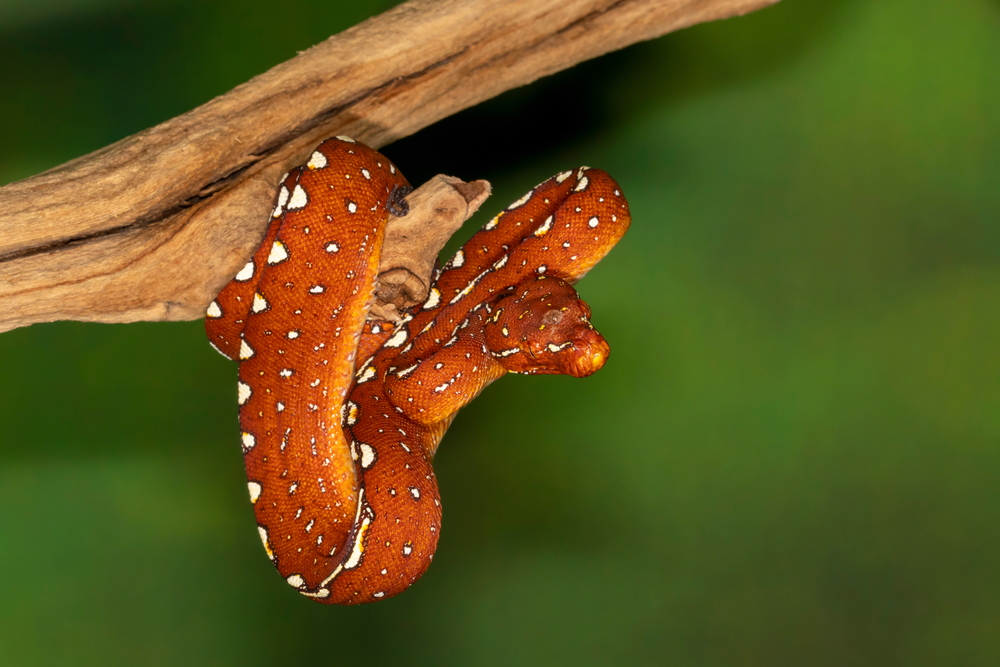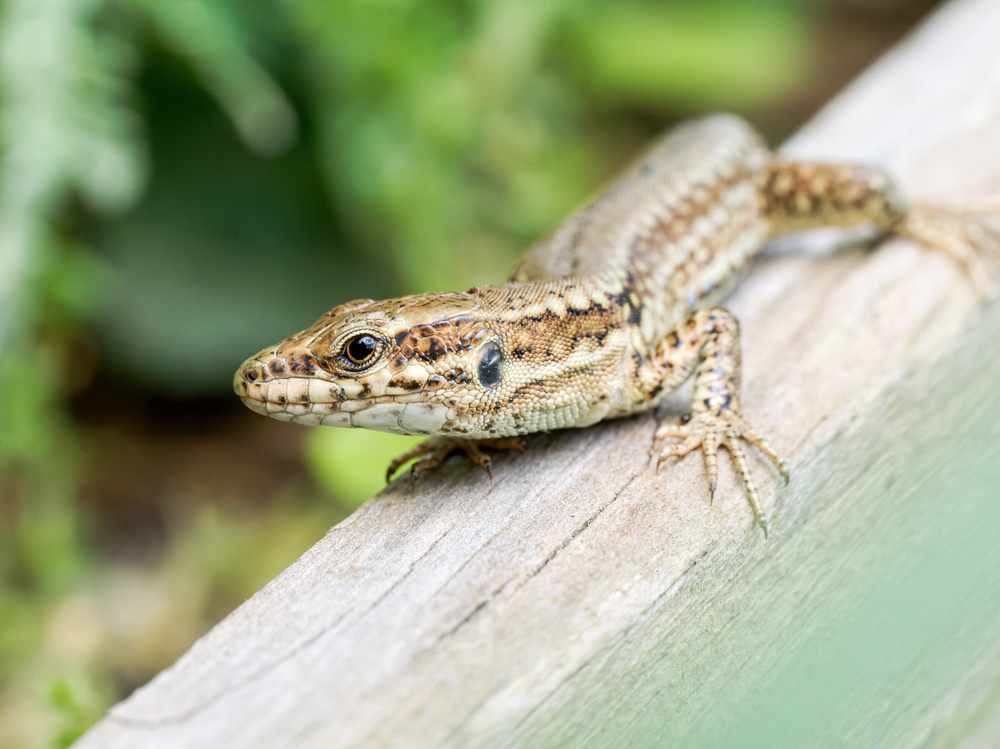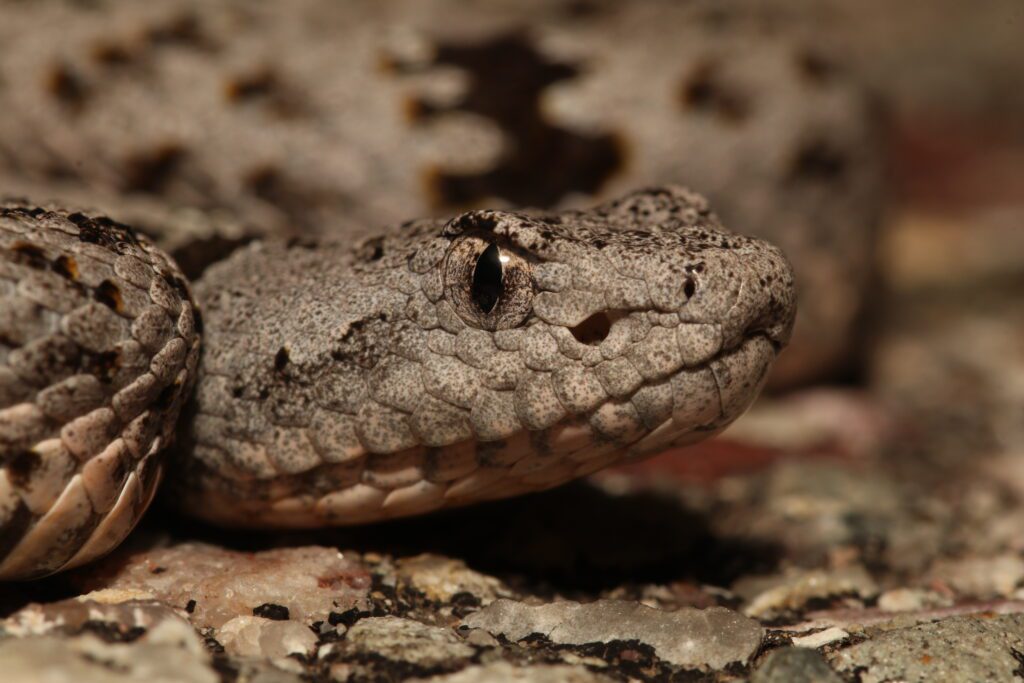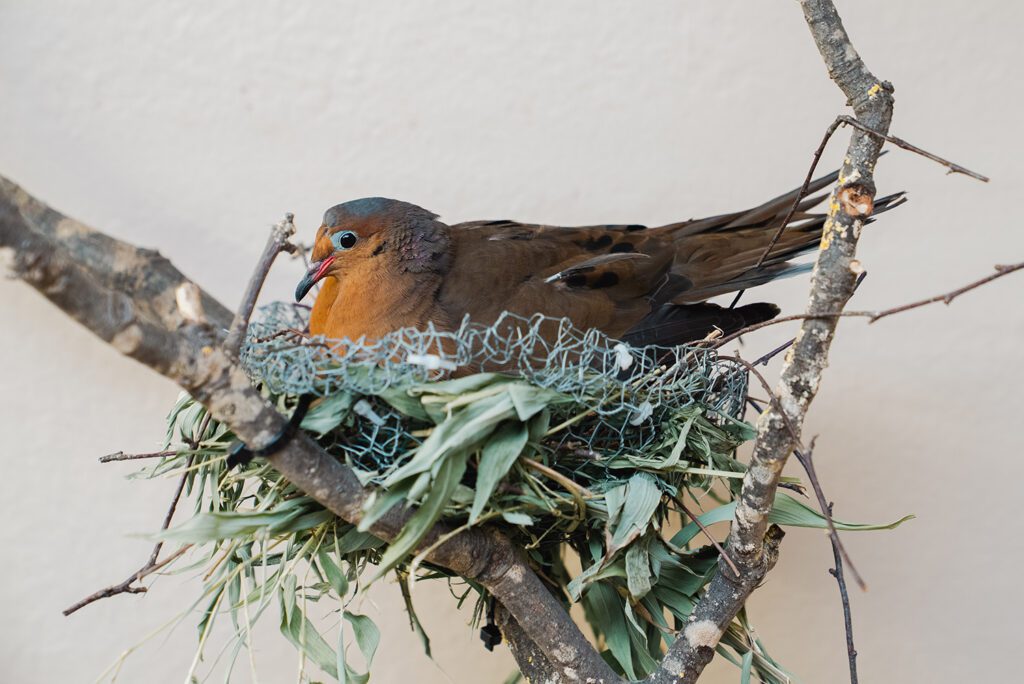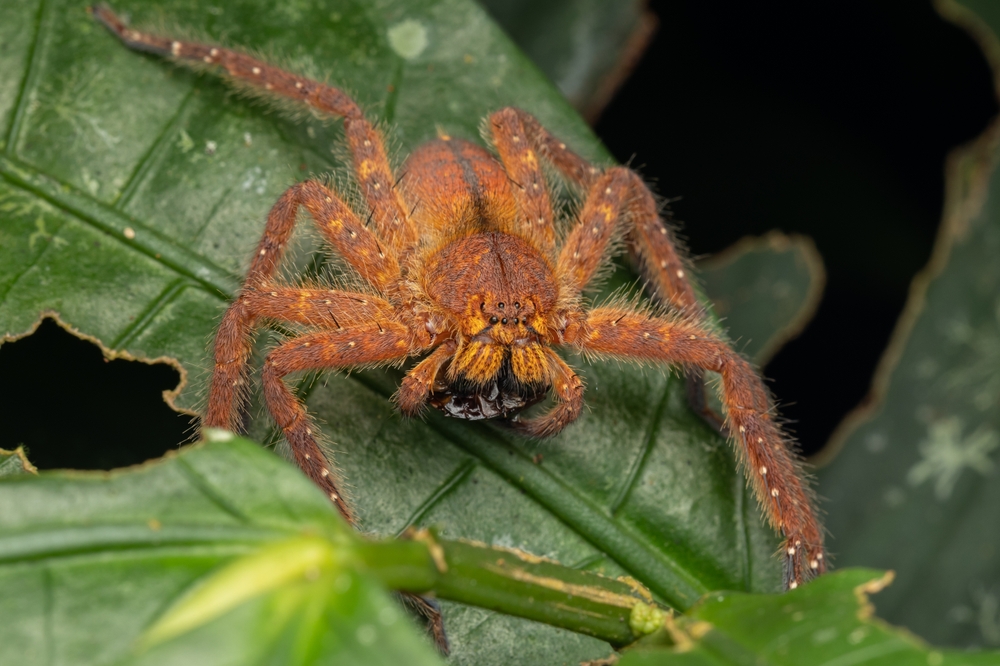Among keepers, few snakes inspire as much awe as the emerald tree boa (Corallus sp.). Emerald tree boas are celebrated in the reptile world for their vibrant green coils and cryptic presence, yet in captivity they are equally notorious – often described as fragile, temperamental, and demanding.
To better understand how emerald tree boas live and thrive in the wild, we spoke with Matthew Wallace, a herping wildlife expedition guide with Unlock Nature Suriname. Matthew has spent countless nights navigating dense jungle in search of snakes, with emerald tree boas often at the very top of his guests’ wish lists. His in-situ encounters reveal details about their behaviour, microhabitat preferences, and resilience – insights that can directly inform how we keep them in captivity.
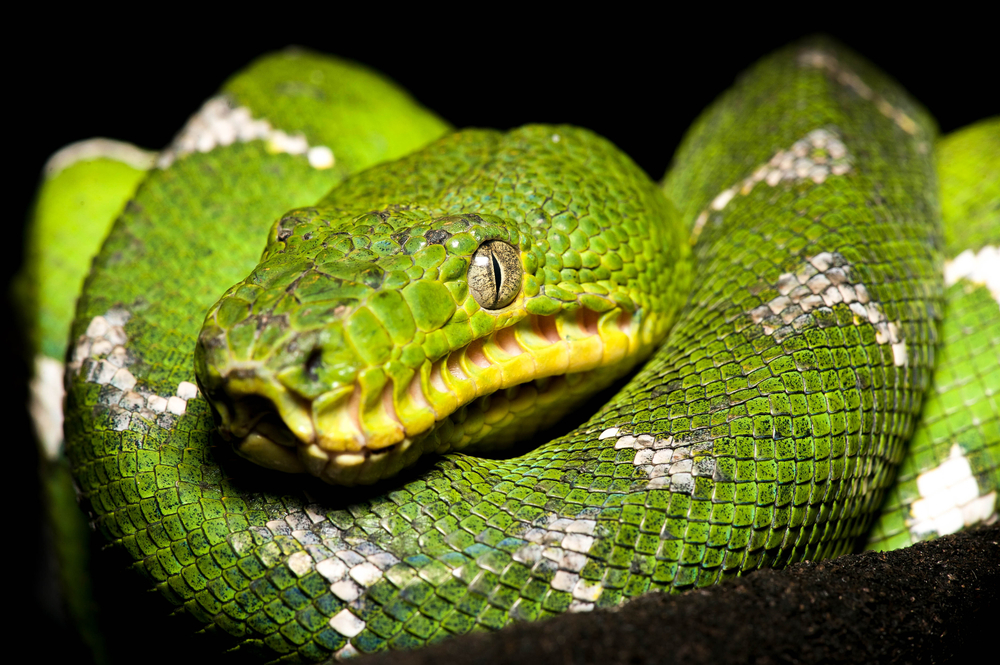
The Emerald Tree Boa
The emerald tree boa (Corallus sp.) is one of the most striking and iconic arboreal snakes of the neotropic rainforests, famed for its vivid green coloration and distinctive white dorsal markings. Native to the humid lowland rainforests of northern South America, its range extends through the Amazon Basin across Brazil, Venezuela, Colombia, Ecuador, Peru, and the Guianas.
There are two recognised species:
- the northern C. caninus, generally heavier-bodied with irregular white or yellow dorsal blotches.
- the Amazon Basin C. Batesii, which tends to be more slender, longer, and exhibits a cleaner emerald hue, and an unbroken white vertebral stripe.
Adult emerald tree boas commonly attain lengths of 1.5–2 m in length, with some exceeding 2.5 m. Females are noticeably larger and more robust than males – a clear example of sexual dimorphism, as males also possess more prominent cloacal spurs used during courtship. This size difference reflects the female’s greater reproductive investment, allowing her to carry large litters of live young, often numbering over a dozen neonates.
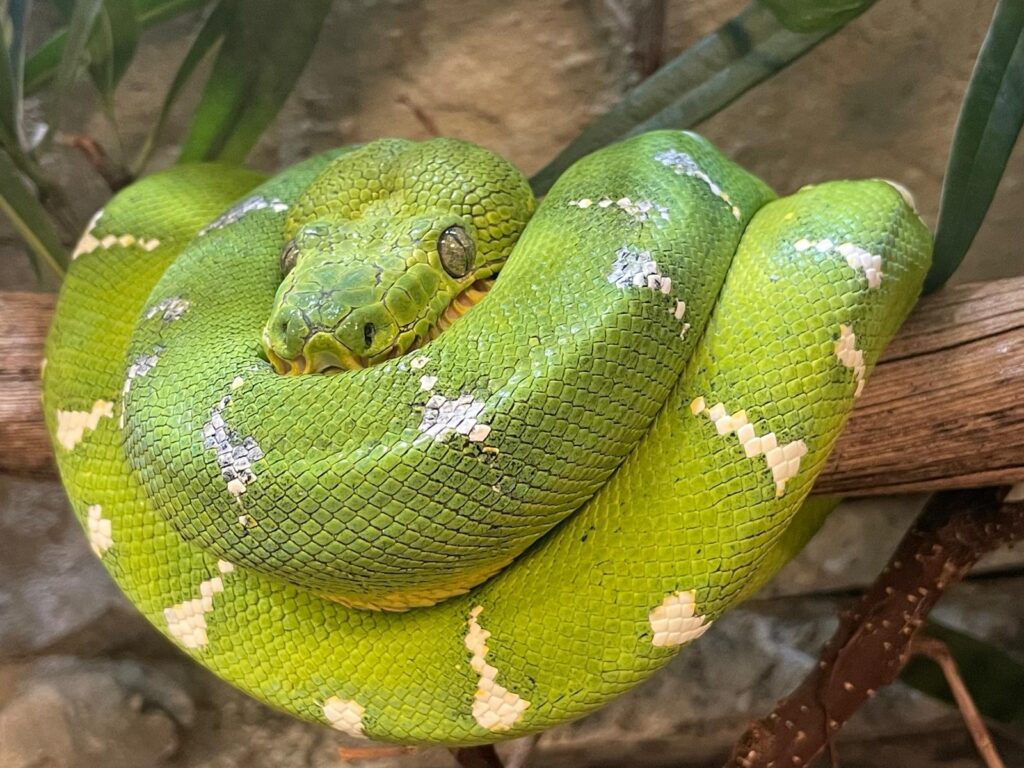
Behaviourally, emerald tree boas are nocturnal ambush predators, remaining coiled on branches in a characteristic saddle-like posture that allows swift strikes at passing prey. Equipped with prominent labial heat pits, they detect the infrared signatures of warm-blooded animals in darkness, feeding primarily on small mammals. Their prehensile tails provide balance and grip in the canopy, and their sharply keeled scales help diffuse light, enhancing their camouflage among leaves.
Despite their beauty and allure, Corallus sp. is not recommended for beginner keepers due to requiring precise humidity and temperature gradients, their sensitivity to stress and the need for ample vertical space and perching opportunities. This reflects their adaptation to one of the planet’s most complex and biodiverse ecosystems. For keepers with the proper resources and patience, however, the emerald tree boa remains one of the most captivating and rewarding species to maintain and study.
Creatures of Routine
Emerald tree boas, Matthew explains, live between two worlds. By day they retreat high into the canopy, tucked safely out of reach, but as night falls they descend with purpose. “They basically have two places,” he says. “They have a sleeping place during the day, and then at nighttime, they descend – sometimes quite a significant distance – to get to their hunting spot. Sometimes this is just 20 cm off the ground. The big ones hunt low, where the larger rodents are. The smaller snakes, they’ll stay higher, chasing arboreal rats.” This nightly shift between canopy refuge and ground-level ambush is a daily ritual and highlights the importance of vertical movement – something often overlooked in captivity.
“These snakes are built for climbing.”
A terrarium outfitted with a single horizontal branch cannot replicate the vertical movements emerald tree boas display daily. Matthew emphasises that “enclosure height is more important than width. They need the choice to move up and down.” For keepers, this means tall enclosures with layered climbing structures – intertwined vines, angled perches, and multiple resting options at different heights – are essential. A snake that travels 15-20 m vertically in the wild cannot thrive in an enclosure that limits it to a single perch.
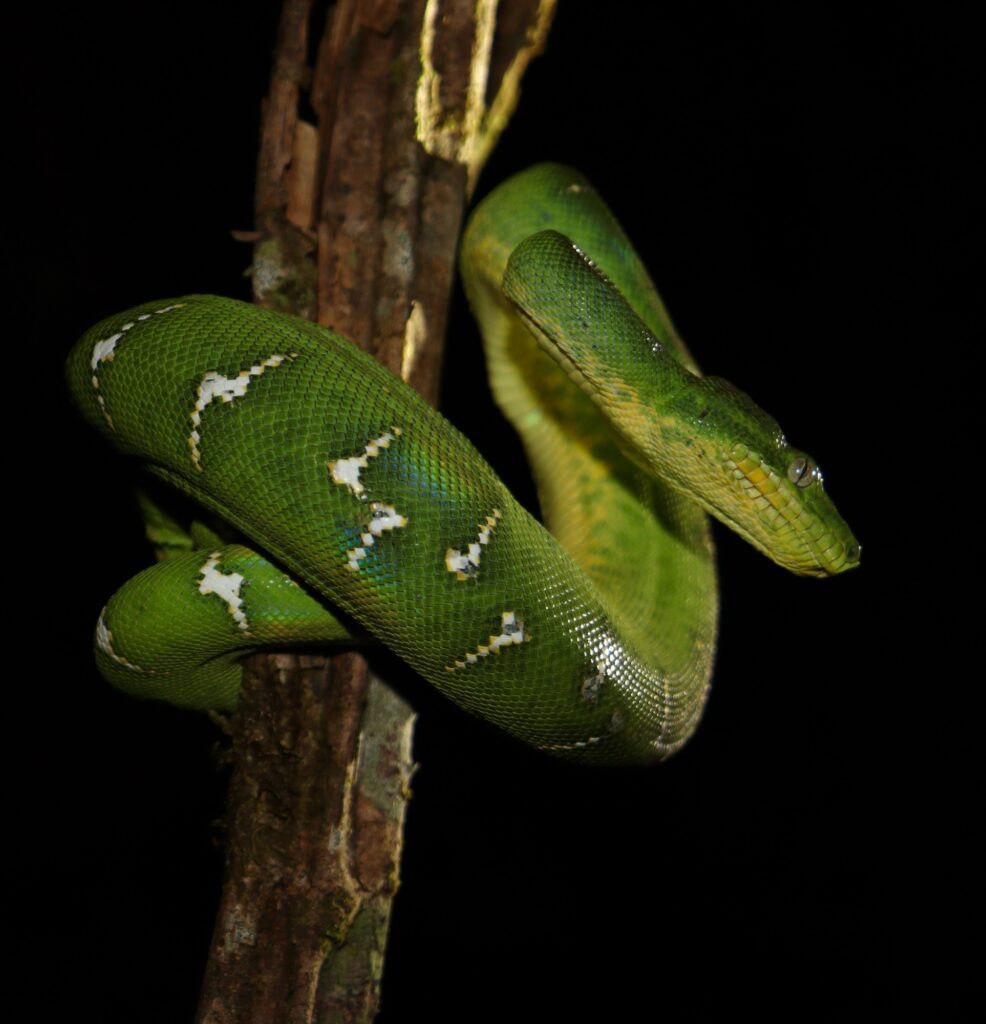
Knowing where the Dinner Table is
When they descend, emerald tree boas do not choose their ambush sites randomly. Matthew has watched emerald tree boas position themselves with remarkable precision, coiling above well-trodden mammal trails or draping across vines that act as natural bridges in the canopy. “You really see that they know where prey will pass,” he recalls. “I once pointed out a rodent trail to guests, explaining why it was the perfect place for a snake. Half an hour later, we found an emerald hanging from a palm frond directly over it, head poised just above the ground.”
Dietary studies support this picture of calculated predation. Despite their long teeth – once thought to be adaptations for catching birds – emerald tree boas are overwhelmingly mammal feeders. “In Brazil, a study showed birds were less than 10% of the diet,” he notes. “The teeth aren’t for feathers; they’re for getting through mammal fur.” For keepers, this suggests the value of feeding practices that encourage natural hunting behaviour. While food will always be delivered, allowing a snake to feed from its chosen perch – particularly at night, once it has settled into a spot – can create conditions closer to in situ observations.
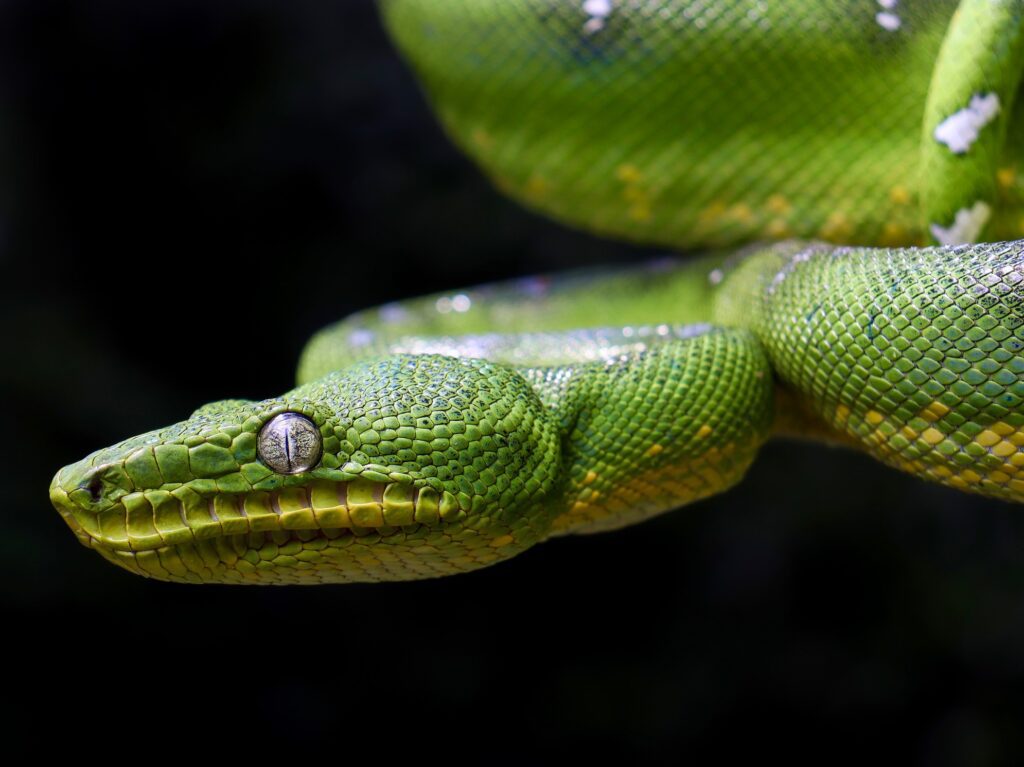
Weathering the Storm
Whilst captive care guides emphasise strict stability, Matthew’s field experience paints a different picture. He often finds emerald tree boas thriving in conditions far from consistent. “I’ve seen them in the dry season, in torrential rain, in heavy winds,” he says. “If it gets really bad, they’ll move into thicker vegetation, but otherwise they don’t seem to care. If you’re going to find a snake in horrible weather, it’s usually an emerald tree boa.” This suggests that these boas are less sensitive to environmental fluctuations than commonly assumed. While stable conditions are still important in captivity, this adaptability suggests that keepers might do well to introduce subtle seasonal changes – shifts in humidity cycles, cooler nights, or variation in rainfall – rather than striving for an artificial consistency. Automated misting systems, Matthew notes, are especially effective when used to replicate natural rainfall rhythms instead of random sprays.
“It’s not just about spraying water – it’s about replicating rainfall cycles.”
No Companions, No Problems
A frequent question among keepers is whether emerald tree boas can be housed together. Matthew has only ever seen two together once – a mating pair high in the canopy. “Their density is low,” he explains. “Encounters beyond breeding are rare.” In captivity, that translates to a simple rule: keep them alone, except when breeding.
Personality and Perception
Emerald tree boas carry a reputation for being defensive, and Matthew feels it is largely justified – at least in the wild. “They do bite a lot, but sometimes it’s not defensive – it’s exploratory,” he says. “I’ve had snakes calmly perched on me, and then in slow motion they just bite, like they’re testing. It’s more like a feeding response than aggression.”
When it comes to handling emerald tree boas, Matthew has shifted his approach over the years. Early in his career guiding tours, he would climb to retrieve emerald tree boas from the canopy and bring them down for photographs, only to find many of them returning to the very same spot by the next night. He has largely stopped handling wild emeralds, both for ethical reasons and practicality. “If an animal is in a hunting position, disturbing it is unfair. And if you leave it, you know it will likely be in the same spot the next night, which makes it easier to relocate.” Handling, in his view, should be minimal, and always respectful of their arboreal instincts. “Anything that climbs needs the option to climb when handled,” he advises. “They’re comfortable if they can move vertically or hang. Forcing them into a horizontal position is stressful.” In other words, to handle an emerald is to think like one: always upwards, never flat; wrapping securely when handled.
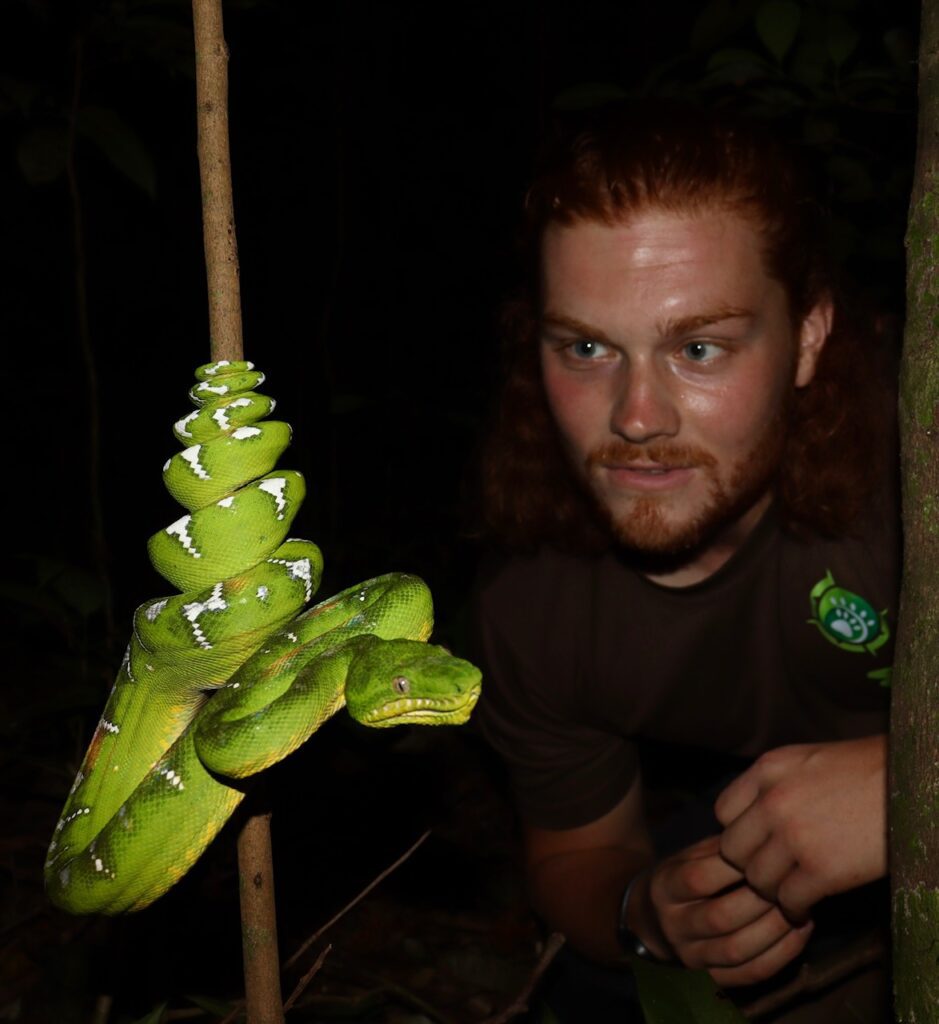
Captive Lessons from the Wild
When asked what keepers could improve most, Matthew does not hesitate: space and structure.
The overarching lesson from Matthew’s in situ observations is that emerald tree boas need choice. They are not static snakes bound to a single perch, but animals that move regularly between hunting sites, adjust to shifting weather, and make deliberate decisions about where to rest and where to strike.
“It’s not that they don’t move much,” Matthew reflects. “It’s that in captivity, they can’t. Give them the space and structure to move like they do in the wild, and you’ll see a very different animal.”
“Taller terrariums, more climbing options, more vertical movement,” he says. “People underestimate their activity. They move between sites regularly in the forest. In captivity, they need the chance to do the same.”
He also stresses the importance of environmental complexity. Minimalistic setups with a few sticks may keep a snake alive, but they do little to encourage natural behaviour. Adding intersecting branches, vines, and cover creates choice and encourages movement. Rainfall simulation, temperature gradients, and feeding from preferred perches all help mimic the emerald tree boa’s life in the canopy and on the forest floor.
“It doesn’t need to be complicated, but it should reflect how they live.”
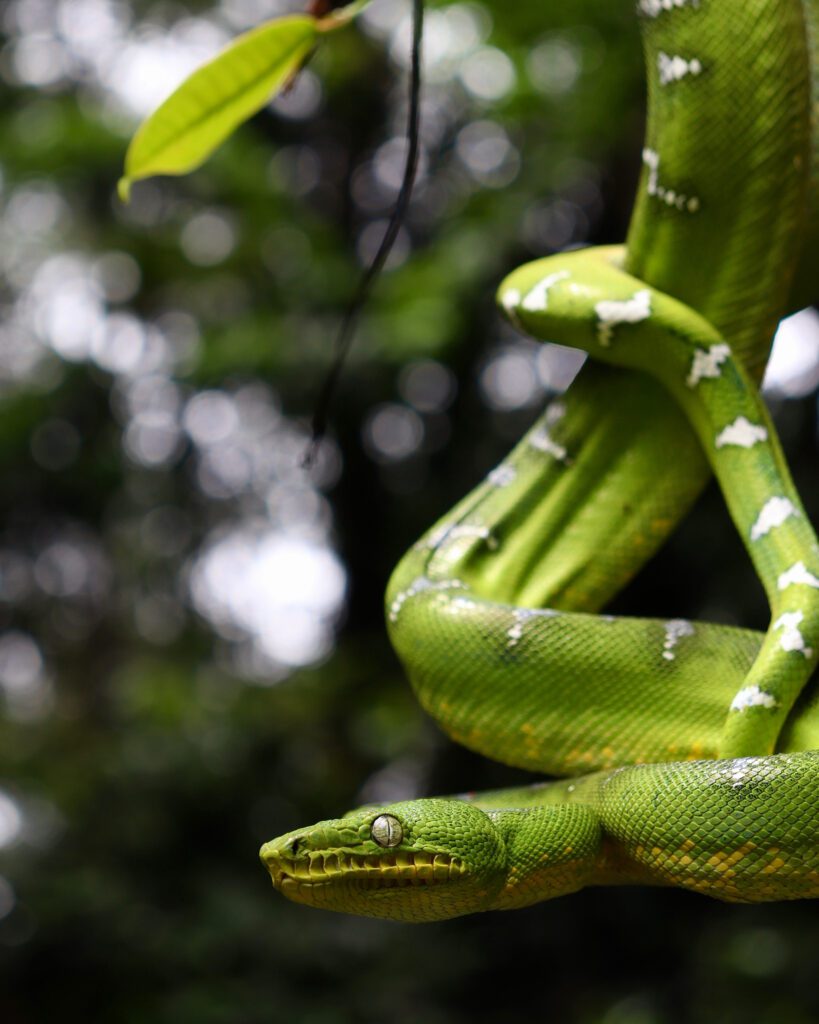
Suriname: A Stronghold for Emeralds
Interestingly, while emerald tree boas are elusive across other parts of South America, Suriname appears to be an exception. “In French Guiana, a colleague has lived there 13 years and only seen them five times,” he says. “In Suriname, I’ve had hundreds of encounters in just three years. The forests here seem to have a uniquely high density of emerald tree boas.”
For keepers and enthusiasts, this makes Suriname the closest thing to a stronghold for this iconic boa. But Matthew insists that the true reward is not just the sighting, but the perspective.
“If you’ve never seen their natural habitat, it’s hard to know what to create in captivity,” he says. “Watching them in situ changes how you think about keeping them.”

You can find out more about herping trips with Unlock Nature here.
By Sanya Aggarwal and Adam Colyer
Nature’s Imitation Game: Emerald Tree Boas and Green Tree Pythons
High in the forests of South America and the Indonesian archipelago, jewel-toned snakes drape themselves…
The Wall Lizards of Ventnor Botanic Garden
Tucked away on the sun-soaked southern coast of the Isle of Wight, UK lies a…
Thinking Like a Snake: Field Insights into Emerald Tree Boa Husbandry
Among keepers, few snakes inspire as much awe as the emerald tree boa (Corallus sp.)….
Herping Arizona Monsoons 2025 – Part One
Arizona encompasses vast stretches of Sonoran, Colorado, and Mojave Deserts. It’s scattered with 10,000-foot-high mountains…
“Extinct” Doves Hatch at Chester Zoo
Eight chicks belonging to a dove species that has been extinct in the wild for decades…
Naming Nature: Where Taxonomy Meets Pop Culture
From David Bowie’s lightning bolt immortalised in the iridescent fur of a spider, to Jackie…
